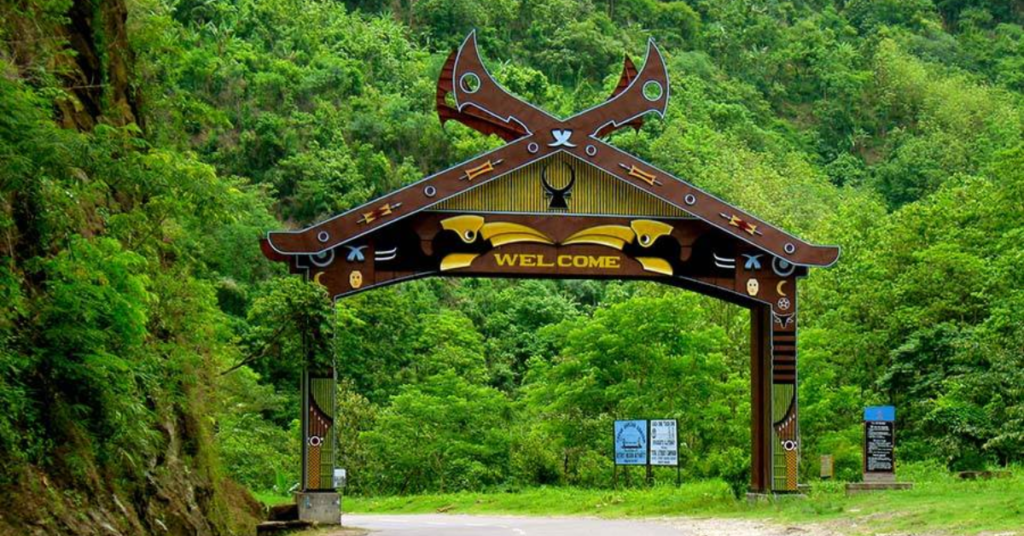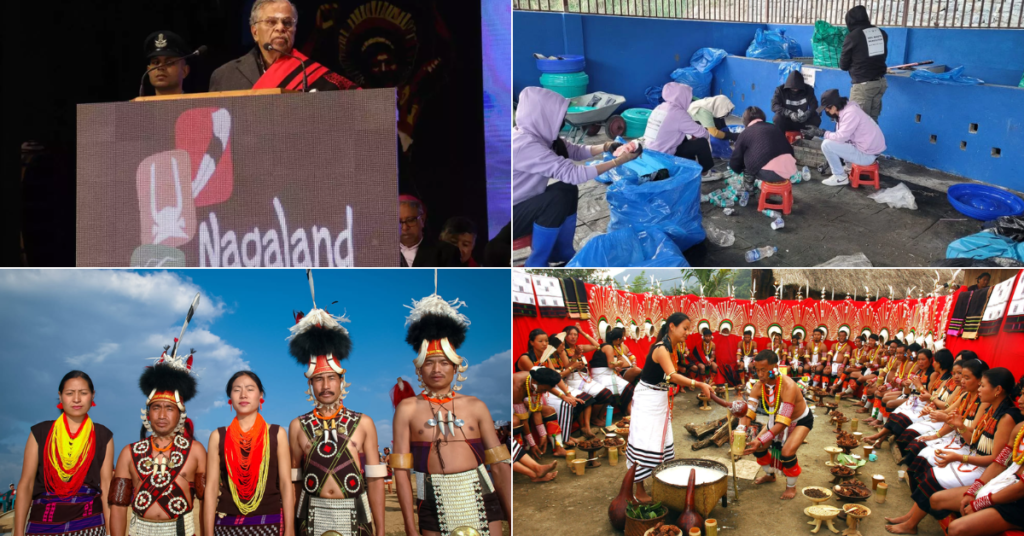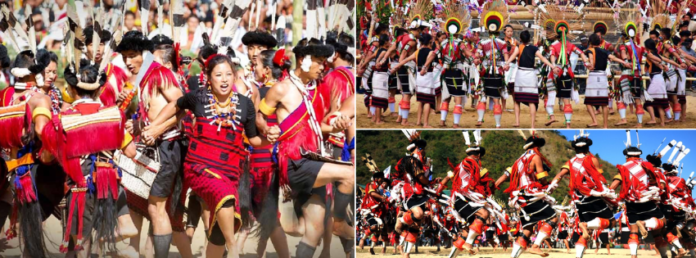Introduction:
Nestled in the lush green hills of Northeast India, Nagaland is a land of vibrant traditions, ancient customs, and a rich tribal heritage. Among its many cultural treasures, the Nagaland Hornbill Festival is a spectacular celebration of Naga culture, drawing travelers from across the globe. This festival, often referred to as the “Festival of Festivals,” offers a mesmerizing insight into the lives of the Naga tribes. However, as a responsible traveler, it’s important to embrace ethical tourism practices that respect local communities and their traditions.

Let’s dive into the magic of the Hornbill Festival, explore its significance, and learn how to be a responsible visitor while experiencing this grand cultural event.
The History Behind the Hornbill Festival:
Nagaland’s indigenous tribes have a rich and diverse history, with each tribe maintaining its own distinct identity, language, customs, and governance system. The Hornbill Festival was conceived as a way to bring these tribes together, promote cultural understanding, and boost tourism. Over the years, it has evolved into one of India’s most significant tribal festivals, drawing visitors from around the world.
Beyond the festivities, the event serves as a platform for cultural exchange, where visitors can interact with tribal elders, artisans, and performers. It is a living museum of traditions, offering an opportunity to experience Nagaland’s cultural essence firsthand.

Must Experience The: Ultimate information of Kerala Backwaters: Houseboat vs. Kayak
The Hornbill Festival: A Cultural Spectacle:
Held annually from December 1st to 10th in Kisama Heritage Village, near Kohima, the capital of Nagaland, the Hornbill Festival was initiated in 2000 by the Government of Nagaland. It aims to promote and preserve the unique heritage of Nagaland’s 16 major tribes while fostering unity among them.
Why is it Called the Hornbill Festival?
The festival is named after the Great Indian Hornbill, a bird that holds a special place in Naga folklore and traditions. Symbolizing beauty, bravery, and strength, the tribes deeply revere the hornbill, and its presence is often depicted in their dances, art, and traditional attires.
Festival Highlights: What to Expect?
The Hornbill Festival is a grand showcase of Nagaland’s rich heritage, featuring an array of cultural performances, indigenous games, handicrafts, and culinary delights. Here’s what you can look forward to:
- Traditional Dances & Music: Witness mesmerizing performances, including warrior dances of the Ao tribe and soulful folk songs of the Angami tribe.
- Tribal Art and Craft Exhibitions: Explore stunning displays of handcrafted jewelry, traditional attire, and indigenous weapons.
- Indigenous Sports Competitions: Enjoy thrilling events like Naga wrestling, archery, and traditional bamboo pole climbing.
- Ethnic Food & Drink Festival: Savor local delicacies such as smoked pork, bamboo shoot curry, and rice beer (Zutho).

Must See: Nelapattu Bird Sanctuary – A Paradise for Bird Lovers
- Hornbill Rock Contest: Experience one of India’s biggest rock music competitions featuring bands from across the country.
- Night Bazaar: Shop for souvenirs and taste authentic Naga street food under the beautifully lit market lanes.
- Traditional Morungs (Tribal Huts) Visit: Learn about the different tribes by visiting their traditional morungs (dormitory huts) that display their unique customs and artifacts.
- Heritage Walks & Folklore Storytelling: Engage in guided tours and storytelling sessions to understand the deep-rooted traditions of Nagaland.
Ethical Travel Practices: How to Be a Responsible Visitor
As the Hornbill Festival gains popularity, it is important to be a conscious traveler who respects the traditions and environment of Nagaland. Here’s how you can make your visit more responsible:
1. Respect Local Customs
- Always seek permission before taking photos, especially during rituals or ceremonies.
- Dress modestly and avoid disrupting cultural performances.
2. Support Local Economies
- Buy handmade crafts and souvenirs directly from artisans to support their livelihood.
- Eat at local family-run eateries instead of large commercial outlets.
3. Minimize Environmental Impact
- Avoid littering and use reusable water bottles and bags.
- Choose eco-friendly accommodations that promote sustainable tourism.

4. Engage with the Community
- Take time to learn about the history and traditions of the Naga tribes.
- Participate in community-led activities rather than commercial tourist traps.
5. Travel with Reputable Tour Operators
- Choose ethical travel agencies that prioritize sustainable tourism and have a deep respect for Naga culture.
Must Visit: Exclusive of 10 Forgotten Forts of Maharashtra: From Raigad to Shivneri
Planning Your Trip to the Hornbill Festival
How to Reach Nagaland?
- By Air: The nearest airport is Dimapur Airport, about 74 km from Kohima. Flights are available from Delhi, Kolkata, and Guwahati.
- By Train: The nearest railway station is in Dimapur, well connected to Guwahati.
- By Road: Kohima is accessible by road from Dimapur via taxis and shared cabs.
➡️ Flight Booking: Click Here to Book Flights
Where to Stay?
- Luxury Stay: Hotel Vivor, Niraamaya Retreats
- Budget Stay: Homestays in Kisama and Kohima
- Eco-Lodges: Sustainable and tribal-run guesthouses for authentic experiences
➡️ Hotel Booking: Click on the hotels to book your room.
Must Visit: Exclusive of complete guide for varanasi: Best Ghats, Evening Aarti, and Hidden Food Streets
Best Time to Visit
The Hornbill Festival takes place from December 1st to 10th, during Nagaland’s pleasant winter season. It’s advisable to book accommodations and transport well in advance, as the festival attracts thousands of visitors.
A Journey Beyond the Festival:
While the Hornbill Festival is the highlight, Nagaland has much more to offer. Extend your trip to explore these fascinating destinations:

- Khonoma Village: India’s first green village, known for its sustainable practices.
- Dzukou Valley: A paradise for trekkers and nature lovers, famous for its stunning landscapes.
- Japfu Peak: Home to the world’s tallest rhododendron tree.
- Kohima War Cemetery: A tribute to the soldiers who fought in World War II.
- Touphema Tourist Village: Experience authentic Naga life with community-led tourism.
Must Experience Journey: The Iconic Best Train Journey in India (Darjeeling Toy Train & Palace on Wheels)
Final Thoughts
Visiting the Hornbill Festival in Nagaland is more than just a trip; it’s an immersive journey into the heart of a rich cultural legacy. By traveling ethically and respectfully, you not only enhance your experience but also support the preservation of Naga heritage.
So pack your bags, embrace the adventure, and witness the magic of the Hornbill Festival—a cultural spectacle like no other.
Frequently Asked Questions (FAQs):
ANS: The Hornbill Festival is an annual cultural festival in Nagaland, held from December 1st to 10th in Kisama, showcasing the traditions of the state’s 16 major tribes.
ANS: The festival takes place at the Kisama Heritage Village, about 12 km from Kohima, the capital of Nagaland.
ANS: The nearest airport is Dimapur Airport, about 74 km from Kohima. From there, you can take a taxi or a shared cab to reach the festival site.
ANS: Visitors can enjoy traditional dances, folk music, indigenous games, Naga cuisine, handicraft shopping, and rock concerts during the festival.
ANS: The festival promotes sustainable tourism by encouraging eco-friendly travel, supporting local artisans, and preserving Nagaland’s cultural heritage.











